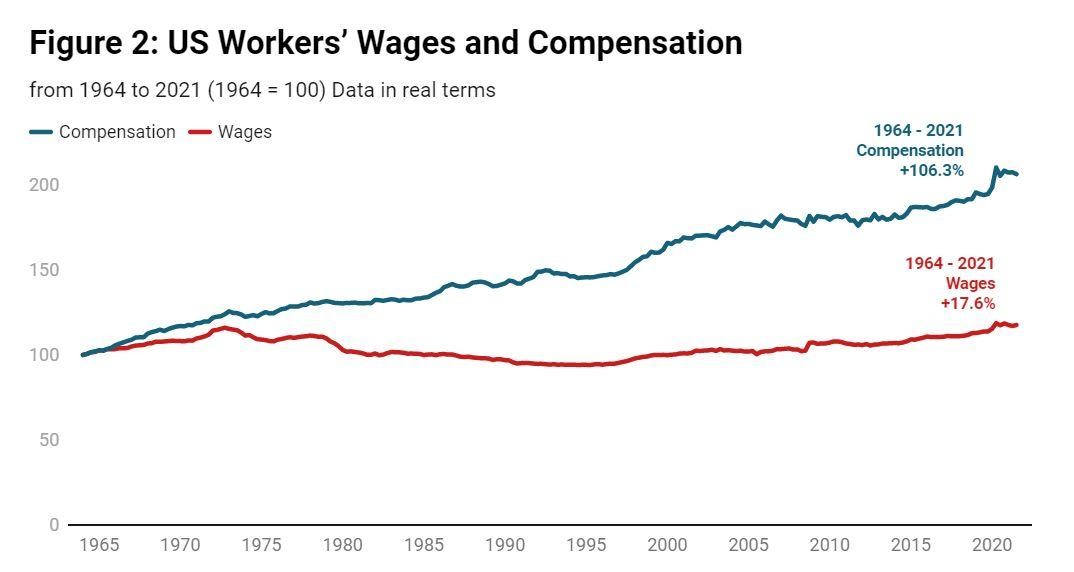
The supposed widening gap between worker productivity and wages since the 1970s, known as "The Great Decoupling," appears to be more myth than reality according to recent economic analysis.
For decades, many economists and commentators have pointed to graphs showing labor productivity rising steadily while wages remained relatively flat after 1970. This apparent disconnect between productivity gains and worker compensation has fueled debates about income inequality and labor rights.
However, a closer examination reveals two major flaws in this narrative. The first issue stems from looking at wages alone rather than total worker compensation. When factoring in benefits like health insurance, retirement contributions, and other non-wage compensation, worker earnings have actually more than doubled between 1964 and 2021, while wages alone grew just 17 percent.
The second problem involves the technical methods used to adjust for inflation. Most analyses use different price indices - the Consumer Price Index (CPI) for wages and the GDP deflator for productivity. This creates an invalid comparison. When using consistent measures, the data shows productivity and worker compensation have grown almost identically since 1947.
Looking at nominal figures without any inflation adjustment tells a similar story - worker compensation and productivity increases have largely moved in tandem over the past 75 years. While a small gap emerged in the early 2000s, it has since nearly closed.
These findings challenge both left-wing arguments blaming union decline and deregulation as well as right-wing claims about monetary policy changes. The data suggests the dramatic narrative of capital gaining at labor's expense lacks empirical support.
Rather than a "great decoupling," the evidence points to a continuing connection between productivity gains and worker compensation, albeit in forms beyond basic wages. This more nuanced picture provides important context for ongoing debates about labor markets and income distribution.